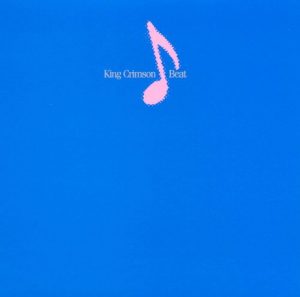Waiting Man
Song performed by King Crimson and written by Adrian Belew, Bill Bruford, Robert Fripp and Tony Levin
Has there ever been a band like King Crimson? I don’t mean their music, which is wonderful all on its own. I’m talking about our commonly held idea of a band as a set group of musicians who work together over an extended period of time. They have produced at a remarkably high level while engaging in a version of professional musical chairs. Looking over their history, the personnel reads like a cross-section of prog rock elite who happened to meet up and decide to make a record. Then, they play a few gigs and go their separate ways. In King Crimson terms, Beat was news because it was the first time the band had made two albums in a row with the same members.
This started me thinking about artistic associations. The image of the traveling theater troupe may have set the standard. The members are permanently attached like the vision of a circus. They go from town to town, living out their private dramas always in one another’s company. Artistic collectives fire the imagination of anyone wanting a demarcation point when looking at history.

The King Crimson record
featured here takes Jack Kerouac as a jumping off point. Neal and Jack and Me is probably the most explicit example. He proved to be the connective tissue across much of American literature in the 1950s and 1960s as a founding member of the Beats. Drawing a circle that includes Allan Ginsberg, Lawrence Ferlinghetti, Ken Kesey, and many others, a movement is defined. They all knew one another. Presumably, they compared notes. They doubtless argued. People come and go through various circles of influence. Movements don’t break-up so much as peter out with death or apathy. We tend to mourn the individuals more than the end of such a group.Orchestras change members all the time, but popular bands make news with change. (Orchestras do, too, but not with every new addition or departure.) Doubtless, the cult of personality comes into play here, except that bands become a personality all on their own. I suppose the personality of King Crimson has become one of change and inquiry. As in- did you hear that Crimson is on tour? Oh? And who’ve they got this time? Other than Fripp, that is?
Then, there is the driving force behind a band or a movement. Robert Fripp has been the King Crimson constant for all these decades. Was Kerouac the driving force behind the Beats? I don’t really subscribe to the great man theory of history, though it makes for an easy shorthand in conversation. One artist can write a good book or make good music, but you don’t get anywhere if you surround that person with mediocrity. Maybe the better way to look at the people who have passed through King Crimson is the way that they have gone out and used their experience to create new art under different circumstances.
What’s it all about?
You’ve Got to Check This Out is a blog series about music, words, and all sorts of artistic matters. It started with an explanation. 179 more to go.
New additions to You’ve Got to Check This Out release regularly. Also, free humor, short works, and poetry post irregularly. Receive notifications on Facebook by friending or following Craig.
Images may be subject to copyright.